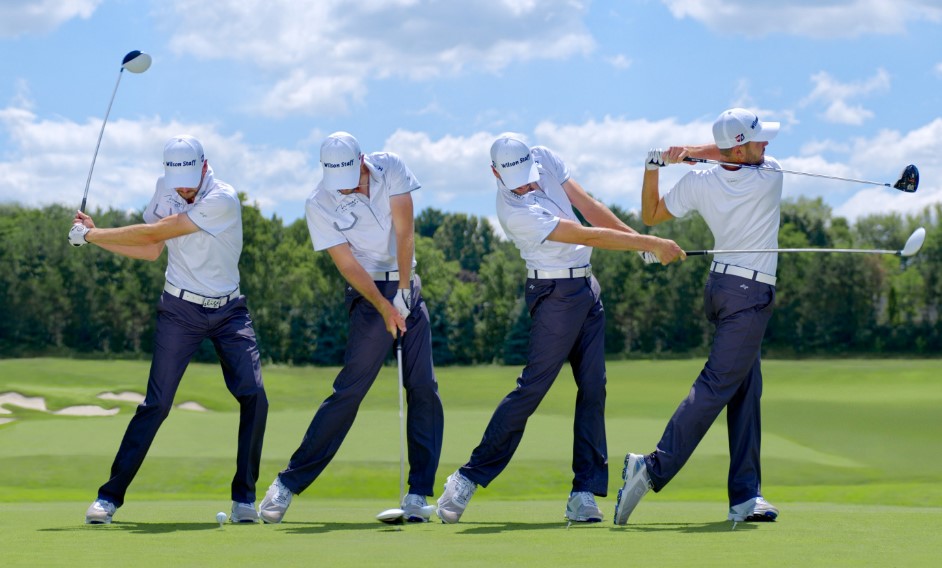In the world of golf, mastering the swing is the foundational skill every player—especially beginners—must develop. The swing is the core of the game, as it’s the only means by which players move the ball toward the hole and score. Without proper swing mechanics, it’s difficult for a golfer to stay competitive—even just to complete a full round satisfactorily.
Unlike other sports like football or basketball that emphasize fast-paced movement, jumping, and sprinting that generate lots of sweat, golf prioritizes accuracy, patience, and precise body control. This is why golf is often mistakenly viewed as a “light” sport that doesn’t require serious physical training. In reality, golf demands harmonious muscle coordination, technical calculation, and mental composure to produce the perfect shot.
For beginners, fundamental mistakes are common due to a lack of understanding of proper swing principles or insufficient practice. Some of the most frequent issues include misdirected shots (e.g., slice or hook), hitting the ground before the ball (resulting in deep divots), or missing the ball completely (known as a “whiff”). These problems are natural during the learning phase, but to avoid repeating them, beginners need to implement strategic approaches to build a solid swing foundation early on.
Here are 6 practical tips and strategies from GoGolf to help beginners improve their swing mechanics—making them more efficient, consistent, and capable of generating better distance.
1. Build a Solid Stance as the Foundation of Your Swing
The first step beginners must focus on before making a swing is establishing a balanced and stable stance. A solid stance acts as the foundation for smooth body rotation, preventing any loss of balance during the motion. Many novice players focus too much on the club and the ball but ignore the importance of body posture.
To form a proper stance, spread your feet shoulder-width apart or slightly wider—depending on the length of the club and the type of shot (a driver typically requires a wider stance than a wedge). Distribute your weight evenly between both legs, then slightly bend your knees to maintain a relaxed posture that allows fluid hip and shoulder rotation.
Keep your back straight but not rigid. A posture that’s too upright restricts your rotation, while being too hunched can lead to balance issues. Let your shoulders and arms relax. Keep your head down, eyes on the ball, and lift your chin slightly to allow space for your shoulders to turn during the backswing.
In swing theory, weight transfer is crucial for producing powerful shots. During the backswing, your weight shifts to the back foot (right foot for right-handed players), and during the downswing and impact, it shifts quickly to the front foot. Without a stable base, this transfer becomes unsteady, reducing swing power and disrupting shot direction.
Therefore, stance drills should be repeated until they become second nature. Many golf instructors recommend practicing stance and posture in front of a mirror—even without a club—to visually ensure your form is correct.

2. Practice the Backswing and Downswing in a Systematic Way
The golf swing consists of two main movements: the backswing and the downswing. These movements must flow together smoothly to maximize energy transfer during impact. Unfortunately, many beginners perform the backswing too quickly or don’t rotate their shoulders fully, while the downswing is often driven solely by arm movement.
Practicing these movements systematically helps program your muscles to work in the correct pattern. In the backswing, your shoulders should rotate approximately 90 degrees away from the target, while the hips rotate about 45 degrees. This creates torque in the core muscles, which is then released during the downswing. Your spine remains the axis of rotation, and your head and eyes should stay fixed on the ball.
The downswing starts with the hips rotating toward the target, followed by the shoulders and arms, and ends with the wrists releasing the club at impact. Beginners often initiate the downswing with their arms—or worse, just their hands—losing all the stored power from their core.
To train this coordination, perform slow-motion drills without a ball. Turn your body into the backswing fully, hold briefly, then transition into the downswing using the proper sequence. Repeat frequently until your body internalizes the movement pattern. These drills significantly reduce the risk of slicing or hooking the ball—issues commonly caused by improper swing sequencing.
3. Learn to Recognize and Develop the “Feel” of a Proper Swing
In golf, the term “feel” refers to the unique sensation when executing a perfect swing—when all body mechanics align naturally, resulting in solid ball contact, maximum clubhead speed, and pinpoint direction. The feel cannot be obtained through theory alone; it is built through thousands of conscious and correct practice repetitions.
To cultivate feel, beginners can break down the swing into its fundamental components. Start with a proper grip and balanced stance, then perform half swings where the club becomes parallel to the ground, focusing on control. Once comfortable, progress to three-quarter swings, and then full swings.
A popular training method is the no-ball drill, where players stand in their address position and swing back and forth repeatedly, just to sense the club’s weight, rhythm, and weight transfer. Over time, your body develops muscle memory, enabling you to swing instinctively without overthinking.
Once the feel begins to emerge, your swing will feel effortless yet powerful. You’ll also gain the ability to detect when your swing is rushed, too quick, or perfectly in rhythm.

4. Use Full Body Rotation, Not Just Arm Strength
One of the most common beginner mistakes is assuming that distance comes from swinging the arms harder. In reality, powerful shots come from the combination of body rotation, a solid base, and synchronized wrist action.
Body rotation is the engine of the golf swing. A full shoulder turn during the backswing stretches your back, abdominal, and waist muscles, which then release energy during the downswing. This is similar to winding up a spring that unleashes force when released.
Arms and hands are simply the transmission of that stored power. If a golfer relies solely on the arms, the swing loses torque, clubhead speed decreases, and the ball won’t travel far. Additionally, using only arms increases the risk of shoulder or wrist injuries, as the smaller muscles bear the brunt of the impact force.
To train body-driven swings, place the club across your shoulders (not held by your hands), and practice rotating as if doing a backswing and downswing. Feel your hips and shoulders working together. Then try it again with the club in hand. Eventually, you’ll build the habit of swinging with full-body rotation.
5. The Importance of Breathing and Swing Rhythm
Though often overlooked, breathing plays a key role in maintaining swing rhythm. Many beginners unintentionally hold their breath during the backswing and exhale sharply at impact. This leads to muscle tension and stifled movement.
Proper swing breathing involves inhaling slowly during the backswing, then exhaling naturally through the downswing and follow-through. This breathing rhythm keeps the body relaxed, allowing smooth hip and shoulder rotation.
Swing tempo is also vital to avoid rushed or jerky shots. Pro golfers typically execute a slow, controlled backswing followed by an accelerated downswing for maximum clubhead speed. Maintaining a stable tempo leads to more consistent, reliable swings.
6. Consistent Practice Is the Key to a Perfect Swing
The five tips above are deeply interconnected and should be practiced as a complete system. From building a proper stance, mastering swing sequences, discovering your swing feel, engaging the whole body, to controlling your breath and rhythm—these elements must be trained consistently.
Golf is not just about reading swing theory; it’s about repetition and experience on the range and the course. The more often you practice the correct swing mechanics, the faster your body develops the right muscle memory. Eventually, a great swing will no longer be a fluke—it will be your default.
If needed, I can help you develop a structured weekly training plan to implement all these tips in a practical way. Just let me know when you’d like to begin. With discipline and a solid understanding of swing theory, there’s no reason why you can’t become a more competent golfer.
[ Follow our social media Account: GoGolf Instagram | GoGolf Facebook | GoGolf X ]











